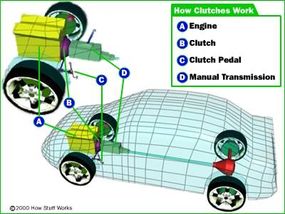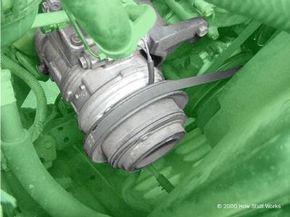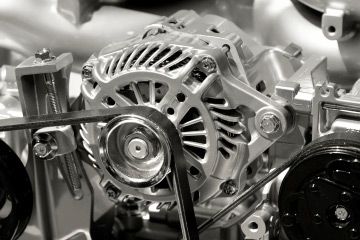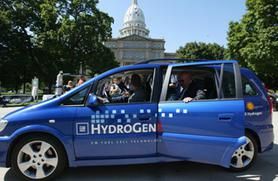There are many other types of clutches in your car and in your garage.
Automatic Clutch Pedals
An automatic transmission contains several clutches. These clutches engage and disengage various sets of planetary gears, which are made of a central drive gear surrounded by gears that orbit it. Each clutch in an automatic transmission is put into motion using pressurized hydraulic fluid.
When the pressure drops, springs cause the clutch to release. Evenly spaced ridges, called splines, line the inside and outside of the clutch to lock into the gears and the clutch housing. You can read more about these clutches in How Automatic Transmissions Work.
Electromagnetic Clutch Pedal
An air conditioning compressor in a car has an electromagnetic clutch. This allows the compressor to shut off even while the engine is running. When current flows through a magnetic coil in the clutch, the clutch engages. As soon as the current stops, such as when you turn off your air conditioning, the clutch disengages.
Thermostatically Controlled Viscous Clutch
Most cars that have an engine-driven cooling fan have a thermostatically controlled viscous clutch— the temperature of the fluid actually drives the clutch. This clutch is positioned at the hub of the fan, in the airflow coming through the radiator. The fluid in the clutch gets thicker as it heats up, causing the fan to spin faster to catch up with the engine rotation. When the car is cold, the fluid in the clutch remains cold and the fan spins slowly, allowing the engine to quickly warm up to its proper operating temperature.
Many cars have limited slip differentials or viscous couplings, both of which use clutches to help increase traction. When your car turns, one wheel spins faster than the other, which makes the car hard to handle. The slip differential makes up for that with the help of its clutch. When one wheel spins faster than the others, the clutch engages to slow it down and match the other three. Driving over puddles of water or patches of ice can also spin your wheels.
Centrifugal Clutch Pedal
Gas-powered chain saws and weed eaters have centrifugal clutches, so that the chains or strings can stop spinning without you having to turn off the engine. These clutches work automatically through the use of centrifugal force. The input is connected to the engine crankshaft. The output can drive a chain, belt or shaft.
As the rotations per minute increase, weighted arms swing out and force the clutch to engage. Centrifugal clutches are also often found in lawn mowers, go-karts, mopeds and mini-bikes. Even some yo-yos are manufactured with centrifugal clutches.
Clutches are valuable and necessary to a number of applications. For more information on clutches and related topics, check out the links below.





